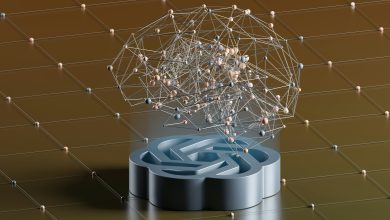
In financial markets, where milliseconds mean millions, I’ve watched the most sophisticated companies in the world make the same costly mistake: assuming better technology automatically leads to better outcomes.
After two decades building mission-critical data systems, the pattern is clear. Organizations pour millions into tech solutions and advanced search, yet teams still struggle to find critical information when they need it. The reality? The missing piece isn’t more computing power or larger models—it’s Enterprise Intelligence, the connective tissue that transforms raw technological capability into actual business value.
The AI Investment Paradox
McKinsey’s 2025 global survey shows only 47% of companies achieving positive ROI on their AI projects. At Google Workspace, I saw this firsthand—Fortune 500 companies coming to us frustrated that even Google-quality search couldn’t solve their knowledge problems. Our research at Bloomfire reveals why: organizations obsess over AI model sophistication while neglecting the essential knowledge infrastructure that makes those models valuable.
This creates a critical disconnect: executives invest in cutting-edge AI without ensuring their organizations have the connective tissue—Enterprise Intelligence—to support it. The result? AI systems that return answers with confidence, but not always accuracy. Contradictory chatbots. Business decisions based on fragmented or redundant data.
Consider one of the world’s largest insurance companies. With 15,000 agents spanning underwriting, claims, and customer service, they had already invested in enterprise search tools—but they were still coming up short. Information was scattered across regional systems, outdated documents circulated unchecked, and even the most seasoned agents wasted hours each week hunting for answers or recreating assets they couldn’t find.
The problem wasn’t AI. It was architecture.
By implementing Bloomfire, they replaced siloed repositories with a governed, federated platform that activated the knowledge they already had:
- Weekly search time dropped by 4.1 hours per employee
- Duplication of effort was reduced by 2.4 hours per week
- The company saved $121.4 million annually, equivalent to the productivity of 1,867 full-time employees
Their knowledge base became self-healing: outdated content was flagged and retired, expert-reviewed answers were centralized, and decision-ready insights surfaced proactively—before employees even searched.
What used to take days and a dozen email chains now takes six minutes and a single person.
This isn’t about knowledge management in the traditional sense. This is Enterprise Intelligence: a strategic framework that turns organizational knowledge into an operational asset. The insurance firm didn’t just improve efficiency—they built an enduring advantage. One that grows stronger every time someone asks a better question, documents a smarter answer, or connects insight to action in real time.
The Tale of Two Approaches
The generative AI boom over the past two years has forced enterprises into a split—often unconscious—between two fundamentally different strategies:
AI-First Companies rush to implement the latest models and interfaces, often prioritizing technical potential over organizational readiness. In their urgency to “do something with AI,” they overlook a critical truth: AI systems only perform as well as the knowledge they’re fed. When deployed without an underlying architecture to govern, validate, and contextualize knowledge, these tools become expensive engines for producing fast—but unreliable—answers.
Knowledge-First Companies take a different path. They recognize that AI doesn’t replace intelligence—it scales it. These organizations focus first on structuring, curating, and activating institutional knowledge so that AI has something trustworthy to amplify. They build what I call “intelligent connective tissue”: the systems, signals, and governance that ensure knowledge flows cleanly through the organization and into the decisions that matter.
The difference in outcomes is measurable. Knowledge-first organizations consistently outperform AI-first peers across core business metrics: ROI, decision speed, employee engagement, and customer satisfaction. They create a durable foundation that future AI innovations can build on, rather than patch over.
What Is Enterprise Intelligence?
Enterprise Intelligence is the missing connector between an organization’s technological capability and its human intelligence. It transforms static data into dynamic capital.
Over the course of my career—leading trading platforms in high-frequency financial markets, designing mission-critical systems where milliseconds separate profit from loss—I’ve seen this pattern repeat: the organizations that win aren’t the ones with the fastest algorithms, but those with the clearest, cleanest access to the right knowledge at the right time.
When I transitioned into enterprise software and later into AI-powered knowledge systems, the lesson held, intelligence isn’t about more data or faster models. It’s about closing the distance between insight and action.
Enterprise Intelligence actively connects three traditionally separate domains:
- Business Intelligence: Moving beyond what happened to understanding why it matters.
- Enterprise Search: Transforming static search into proactive insight delivery.
- Knowledge Management: Converting passive storage into dynamic, living intelligence.
When these components are integrated with Generative AI, they create something entirely new: a self-sustaining knowledge ecosystem that learns, adapts, and improves continuously. AI serves as the catalyst, but human intelligence remains the core—ensuring that technology amplifies rather than replaces human expertise.
This isn’t just theory. Real organizations prove this daily. When these elements converge, organizations develop a kind of collective intelligence that’s greater than the sum of its parts. Knowledge flows to where it’s needed before it’s requested. Insights surface automatically in context. Teams make faster, better decisions because they’re working with complete intelligence, not fragmented information.
The Active Destruction of Organizational Knowledge
Implementing AI without proper knowledge foundations not only fails to deliver value, it actively destroys organizational intelligence. Through my work with enterprise systems, three compounding problems occur when organizations rush to implement AI without proper knowledge architecture:
- Knowledge Fragmentation: When AI systems operate on incomplete or disconnected information, they create multiple versions of truth across the organization.
- Expertise Displacement: As teams rely more on AI-generated answers, they lose the context and understanding that made their original knowledge valuable.
- Systemic Erosion: Poor knowledge architecture creates a downward spiral—each incorrect AI response further degrades the organization’s collective intelligence.
Bloomfire’s research shows that 84% of organizations feel more confident about preserving institutional knowledge after adopting Enterprise Intelligence practices, particularly in the face of employee turnover and internal mobility. Without these structures, know-how walks out the door, undocumented and unrecoverable.
The consequences compound over time. When organizations can’t validate AI outputs against their knowledge foundation, they face:
- Contradictory decisions across departments.
- Growing disconnect between AI responses and business reality.
- Increasing reliance on unreliable automated outputs.
The absence of knowledge governance impacts judgment at scale. According to the Value of Enterprise Intelligence Report, 80% of organizations see a measurable improvement in decision-making accuracy after implementing Enterprise Intelligence—underscoring how poor foundations aren’t just inefficient, they’re strategically dangerous.
Building the Missing Layer
Building Enterprise Intelligence isn’t a technology implementation—it’s an architectural transformation. Through decades of developing enterprise systems, I’ve identified three foundational elements that determine success:
- Knowledge Architecture: Create a living system that actively captures and connects organizational expertise, turning isolated knowledge into networked intelligence
- Intelligent Validation: Build feedback loops that continuously verify and improve the quality of organizational knowledge
- Proactive Distribution: Deploy systems that anticipate information needs and deliver contextual insights before they’re requested
Understand that Enterprise Intelligence isn’t built—it’s grown. It requires creating an environment where knowledge naturally flows, connects, and improves over time. Success comes from treating knowledge as a dynamic asset rather than static information that is stored and retrieved on demand.
Bloomfire data shows that organizations typically achieve platform-wide rollout in under 30 days, even across distributed or highly regulated teams. Many report ROI within the first quarter due to reduced duplication, faster onboarding, and real-time access to institutional expertise. This level of agility is a key reason companies increasingly treat knowledge architecture as an urgent priority—not a long-term IT project.
Technical advances make this increasingly achievable.
The technology exists today to create self-validating knowledge systems, detect contradictions automatically, and deliver insights with high precision.
For example, a major utility provider—navigating the migration of multiple acquired subsidiaries—deployed Bloomfire in under a month to unify emergency procedures, policy references, and regulatory content across newly integrated teams. The platform provided continuity during a period of major system transition, with region-specific knowledge surfaced instantly and SMEs re-engaged as active content stewards. It wasn’t just a technology switch—it was a stabilizing force during organizational change.
Creating a Competitive Advantage of Intelligence
The true competitive advantage of Enterprise Intelligence comes from its compound effect on organizational capability. Having built systems for the world’s most sophisticated financial markets, I know that organizations that master their knowledge architecture create advantages their competitors simply cannot replicate.
Enterprise Intelligence acts as your organization’s nervous system rather than just another technology layer. When knowledge flows freely and intelligence is embedded in every decision, organizations develop capabilities that transcend individual tools or technologies so teams can:
- Solve problems faster by building on collective intelligence, rather than reinventing solutions.
- Adapt more quickly because insights flow to decision-makers in real time.
- Accelerate innovation by leveraging knowledge that connects across traditional silos.
- Deepen customer relationships because every interaction builds on accumulated intelligence.
One global CPG brand saw this advantage clearly. Their research and category teams had become overwhelmed by duplicate studies, lost insights, and disconnected tools. By unifying over 1,200 historical research assets in Bloomfire and integrating the platform into their product development process, they accelerated concept testing and reduced redundant research spend by millions annually. Insights that once sat dormant now shape go-to-market strategies in real time. Their competitors are still hiring consultants to run studies they already ran five years ago.
Unlike AI models or technology stacks that competitors can purchase, Enterprise Intelligence creates a sustainable advantage that grows stronger over time. It’s the difference between buying a faster computer and developing organizational muscle memory.
These competitive differentiators create sustainable advantages. While competitors can replicate AI models, an organization’s unique knowledge architecture creates a moat that competitors cannot easily cross.
Breaking Industry Inertia
The industry’s current focus on AI models over knowledge architecture mirrors patterns I’ve witnessed repeatedly in financial markets and enterprise software. Organizations rush to implement the latest technology while neglecting the foundational architecture that gives that technology value.
This creates a predictable pattern:
- Companies invest heavily in AI capabilities.
- Quick wins fail to materialize.
- More technology gets layered on top.
- Core knowledge problems compound.
- Value remains locked away.
Breaking this cycle demands a complete review of how organizations view knowledge. It’s not a static asset to be stored. Rather, it must be the dynamic capital that grows or decays based on how it flows through your organization.
AI’s value multiplies when organizations build on solid knowledge foundations. The most successful organizations I’ve worked with understand this: they invest in knowledge architecture first, then leverage AI to amplify that foundation.
Taking the Next Step
Organizations ready to build Enterprise Intelligence must focus on three critical elements:
- Knowledge Mapping: Conduct a thorough audit of existing knowledge assets, identify gaps, and establish governance frameworks
- Federated Architecture: Implement a balanced approach that combines centralized governance with distributed expertise
- Continuous Improvement: Establish metrics to track knowledge integrity, usage, and impact on business outcomes
Success in this journey demands architectural transformation. A leading financial services firm demonstrated this by first mapping their existing knowledge landscape. They discovered 60% of critical trading insights lived only in their analysts’ heads. Through systematic capture and connection of this knowledge, they cut decision times in half and reduced risk exposure by 40%.
Results like these don’t just improve efficiency—they signal a deeper advantage rooted in how an organization structures and mobilizes its knowledge.
The Architecture Behind the Advantage
Two decades in financial markets revealed a simple truth: architectural advantage precedes market leadership. The most successful trading firms didn’t just win with better algorithms—they won by building superior information systems.
Enterprise Intelligence delivers this same architectural edge for modern organizations. It transforms isolated knowledge into compounding value, scattered expertise into collective intelligence, and static information into dynamic capital. Every interaction strengthens the foundation. Every decision improves accuracy. Every insight multiplies impact.
The divergence is already underway. Enterprises with strong knowledge architecture outperform in every metric that matters—from customer satisfaction to innovation velocity. Each business decision either widens that gap—or helps close it.




